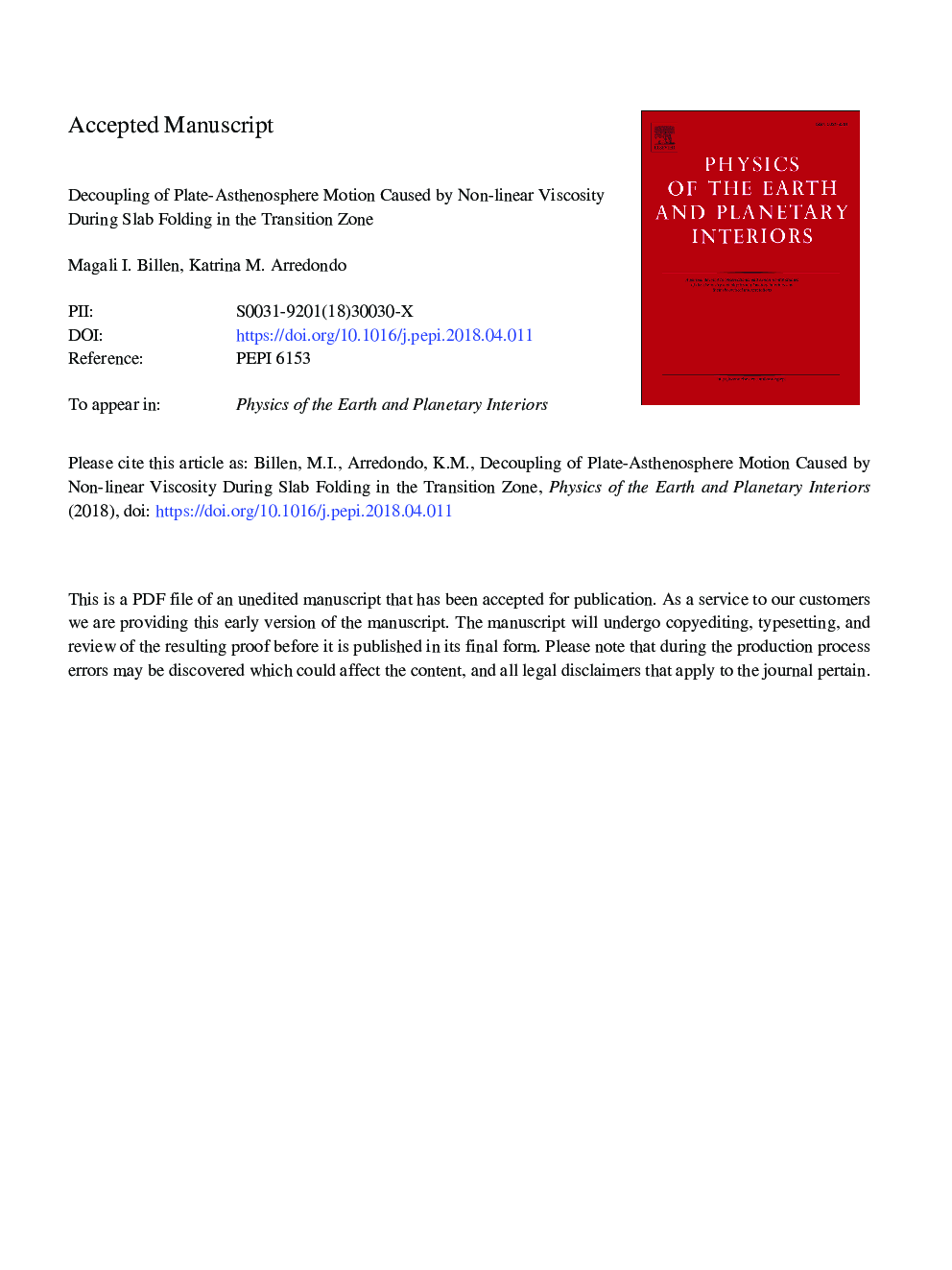| کد مقاله | کد نشریه | سال انتشار | مقاله انگلیسی | نسخه تمام متن |
|---|---|---|---|---|
| 8915673 | 1641459 | 2018 | 30 صفحه PDF | دانلود رایگان |
عنوان انگلیسی مقاله ISI
Decoupling of plate-asthenosphere motion caused by non-linear viscosity during slab folding in the transition zone
ترجمه فارسی عنوان
جدا کردن جابجایی صفحات - آستنوسفر بوسیله ویسکوزیته غیر خطی در هنگام بستن تخته در منطقه انتقال
دانلود مقاله + سفارش ترجمه
دانلود مقاله ISI انگلیسی
رایگان برای ایرانیان
کلمات کلیدی
تغییر شکل لبه، انتقال فاز، کوپلینگ پلاستیکی، رئوئولوژی، ساختار حرارتی اسلب، ساختار حرارتی گوه غلتک،
موضوعات مرتبط
مهندسی و علوم پایه
علوم زمین و سیارات
فیزیک زمین (ژئو فیزیک)
چکیده انگلیسی
Although most present-day subduction zones are in trench retreat, plate reconstructions and geological observations show that individual margins experience episodes of advancing, retreating or stationary trench motion with time-variable subduction rates. However, most laboratory and numerical simulations predict steady plate velocities and sustained trench retreat unless the slab experiences folding in the transition zone. Using 2D dynamical models of subduction with a mobile trench and overriding plate, we find that rapid sinking of the slab during folding causes a reduction in asthenosphere viscosity through the non-linear rheology, which allows the overriding plate to move in the opposite direction of the asthenosphere. This decoupling of the direction of plate and asthenosphere flow allows for episodes of rapid trench advance after each slab folding event. By analyzing the interaction between slab deformation (sinking direction and speed), stress-induced changes in asthenosphere viscosity, asthenosphere flow and plate motions, we show that there are three modes of slab-flow-plate interaction: 1) coupled trench retreat during rapid vertical sinking, 2) coupled trench advance during prograde sinking of the slab, and 3) decoupled, rapid trench advance during folding with prograde motion of the shallow slab and retrograde motion of the deep slab. These results show that non-linear viscosity plays an important role in determining the force balance controlling trench motion and conversely that trench motion can be used as a constraint on the asthenosphere viscosity underlying the overriding plate. In addition, cooling by several hundreds of degrees during episodes of fast subduction could lead to a reduction in slab dehydration and fluid-induced melting in the mantle wedge. Such cold episodes would also likely lead to time-variability in the water content and related geochemical tracers in erupted lavas, as well as the amount of water being transported by slabs into the deep mantle.
ناشر
Database: Elsevier - ScienceDirect (ساینس دایرکت)
Journal: Physics of the Earth and Planetary Interiors - Volume 281, August 2018, Pages 17-30
Journal: Physics of the Earth and Planetary Interiors - Volume 281, August 2018, Pages 17-30
نویسندگان
Magali I. Billen, Katrina M. Arredondo,
